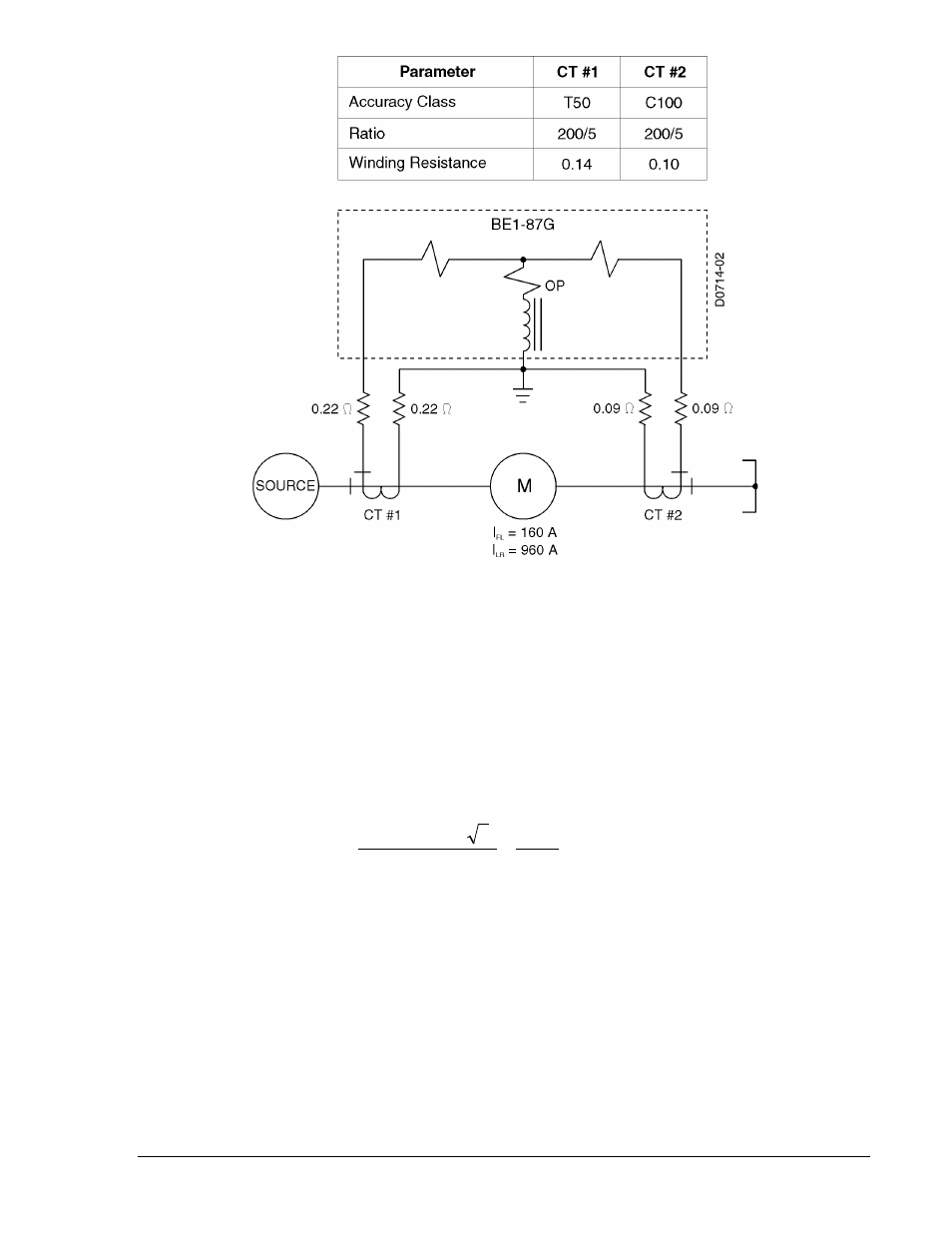Setting example 2, Setting example 2 -9, Figure 5-7. motor differential application -9 – Basler Electric BE1-87G User Manual
Page 65

Figure 5-7. Motor Differential Application
Using the SFR 4 column of Table 5-1, a 0.8 ampere setting is indicated. However, based on the note
accompanying this table, choose the next higher setting of 1.6, because CT #1 has a T classification and
CT #2 has a C classification. The T classification indicates that the CT has significant secondary leakage
inductance which somewhat degrades the transient performance. This is a concern during motor starting
because a slowly decaying offset component develops in at least one phase.
Setting Example 2
Select the pickup setting for the generator application in Figure 5-8. In this application, the settings need
to be based on the probability of significant dissimilar CT saturation during an external fault. Since the
generator is resistance grounded, the three-phase fault current will be much larger than the ground fault
level. Moreover, the resistor will rapidly dampen any offset-current component. Accordingly, determine the
sub-transient current (I”
d
).
rating
CT
I
d
×
=
=
×
×
÷
=
6
.
4
30
8
.
138
200
15
.
0
)
3
16
.
4
(
1000
"
Since a three-phase fault is involved, one-way lead burden is used to determine the total CT burden.
Each phase CT carries just the burden for the lead of that phase.
(R
t
)
1
= R
l
+ R
w
= 0.22 + 0.14 = 0.36 ; (Vce)
1
= 50 ; R
t
< 0.007(Vce)
1
= 0.35
(R
t
)
2
= 0.09 + 0.10 = 0.19 ; (Vce)
2
= 100 ; R
t
< 0.007(Vce)
2
= 0.7
Inequality (1) is met with CT #2 but not with CT #1. However, since the maximum external fault current is
only 4.6 time the CT rating (versus the assumption of 20 times rated for inequality (1)), the application is
suitable.
SFR = (1000 ÷ 50) × (0.36 ÷ 0.19) = 3.8
Using the SFR 4 column of Table 5-1, a 0.8 ampere setting is indicated. However, based on the note
accompanying Table 5-1, choose the next higher setting of 1.6 because CT #1 has a T classification and
CT #2 has a C classification. The T classification indicates that the CT has significant secondary leakage
inductance which somewhat degrades the transient performance. This is a concern during motor starting
because a slowly decaying offset component develops in at least one phase.
9170800990 Rev N
BE1-87G Testing and Setting
5-9
